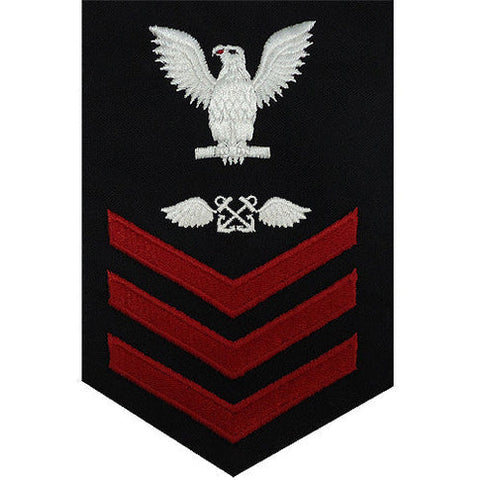
For those uninitiated in the complex, colorful world of naval uniforms, the sight of Navy stripes on sleeves might seem purely decorative. However, to comprehend the full extent of those lines, fine and seemingly unassuming, is to grasp the depth of tradition, honor, and achievement they represent. These insignias tell stories of rank, experience, and dedication to service that resonate throughout naval history.
Whether you're a recent recruit, a proud veteran, or just someone who finds the naval uniform intriguing and a source of questions, this deep-dive into the meaning of Navy stripes on sleeves is for you.
Origins of Navy Stripes on Sleeves
The practice of putting Navy stripes on sleeves has deep historical roots. Pioneered in the 18th century by the British Royal Navy, the concept was a straightforward one: to visibly indicate the seniority and therefore command structure among the crew. This was a time when communication on vast, often smoke-shrouded decks was as much a matter of visual recognition as it was the barked orders of a familiar voice.
The simplicity of the design—horizontal lines of varying number—allowed for quick identification. It's from this necessity to establish authority on the high seas that we derive the modern custom of Navy stripes on sleeves.
Modern naval uniforms, much like the codes they honor, derive their visual language from traditional roots. The meaning behind each stripe, however, may not be as intuitive to an outsider as it is to a seasoned sailor.
Rating Badges
The most common and easily recognizable stripes are the Rating Badges worn by enlisted sailors. These consist of diagonal stripes that are intended to identify a sailor's occupation—ranging from a single chevron for a seaman recruit to a 'crow' for a petty officer. Each one is a declaration of specialized skill and contribution to the ship's operation.
Service Stripes
In contrast, some Navy stripes on sleeves are worn to denote years of honorable service. Each stripe, or "hash mark," usually represents four years of service. If the individual has served during a time of war, they may be authorized to wear a "wartime service hash" in addition to their regular service stripes.

Rank Insignia Stripes
At the crux of naval hierarchy are the Rank Insignia Stripes. These Navy stripes on sleeves are not so much stripes as they are solid bars of braid on the cuffs or epaulets of the uniform. An admiral could possibly have up to four stars, whereas a captain would have four stripes. Officers of lesser rank would wear fewer stripes, down to the single stripe of an ensign or a second lieutenant in the Navy.
Understanding and recognizing the nuances of these markers is crucial to interpreting the experience and leadership within the Navy.
Evolutions and Exclusions
Naval tradition is not static. It evolves over time to reflect the values and necessities of the modern Navy. For instance, the Royal Navy's historic use of Navy stripes on sleeves to denote time in service has been replaced by a system using a colored ribbon. The U.S. Navy, however, retains the service stripe, respecting the history and dedication of its sailors through tradition.
Rank stripes have also changed. Until the 1940s, the U.S. Navy's commissioned officer's rank stripes were worn on the lower sleeve, but they were relocated to the shoulder board for practical reasons. Despite these shifts, the symbols persist as a way of connecting contemporary sailors with those who came before.
The Importance of Tradition
While traditions may come from a place of necessity and pragmatism, they are what perpetuate the sense of naval identity and mission. A uniform fosters unity among the naval community, and its symbols convey a lineage of duty and honor.
Traditions also facilitate a sense of continuity across time. An ensign today may wear the same style as an ensign from centuries past, uniting them in a silent fraternity of service. This preservation of tradition allows the past to have a meaningful way of speaking to the present, offering respect to the generations of veterans and a solid foundation from which to face the future.
Conclusion: Navy Stripes on Sleeves
To the untrained eye, the Navy stripes on sleeves might appear to be a ranking system—a way of organizing the right people at the right place in the chain of command. While this is true, they are so much more. They are an enduring symbol, a marker of time, a testament to service.

For those who wear Navy stripes on sleeves the stripes embody countless days and nights, hours of training, and a commitment to something greater than themselves. When deciphered, they reveal not only a person's individual position within the Navy but a heritage of sacrifice, discipline, and bravery that every sailor carries with honor.
The next time you see a naval uniform adorned with these stripes, see beyond the threads and fabric, and recognize the weight of history they carry. They are the legacy of sailors past and present, a stirring tribute to the profound service within the heart of the Navy.
2 comments
Non rated men in the U S Navy wore stripes on upper part of left sleeve to denote rank.
1 stripe : SR (Seaman Recruit) I believe recruits usually did not wear any stripes )
2 stripes : SA (Seaman Apprentice) Usually after completion of recruit training “boot camp”"
3 stripes : SN (Seaman) Usually after completion of 6 months as SA
Thought I saw green stripes on a Navy enlisted person’s uniform